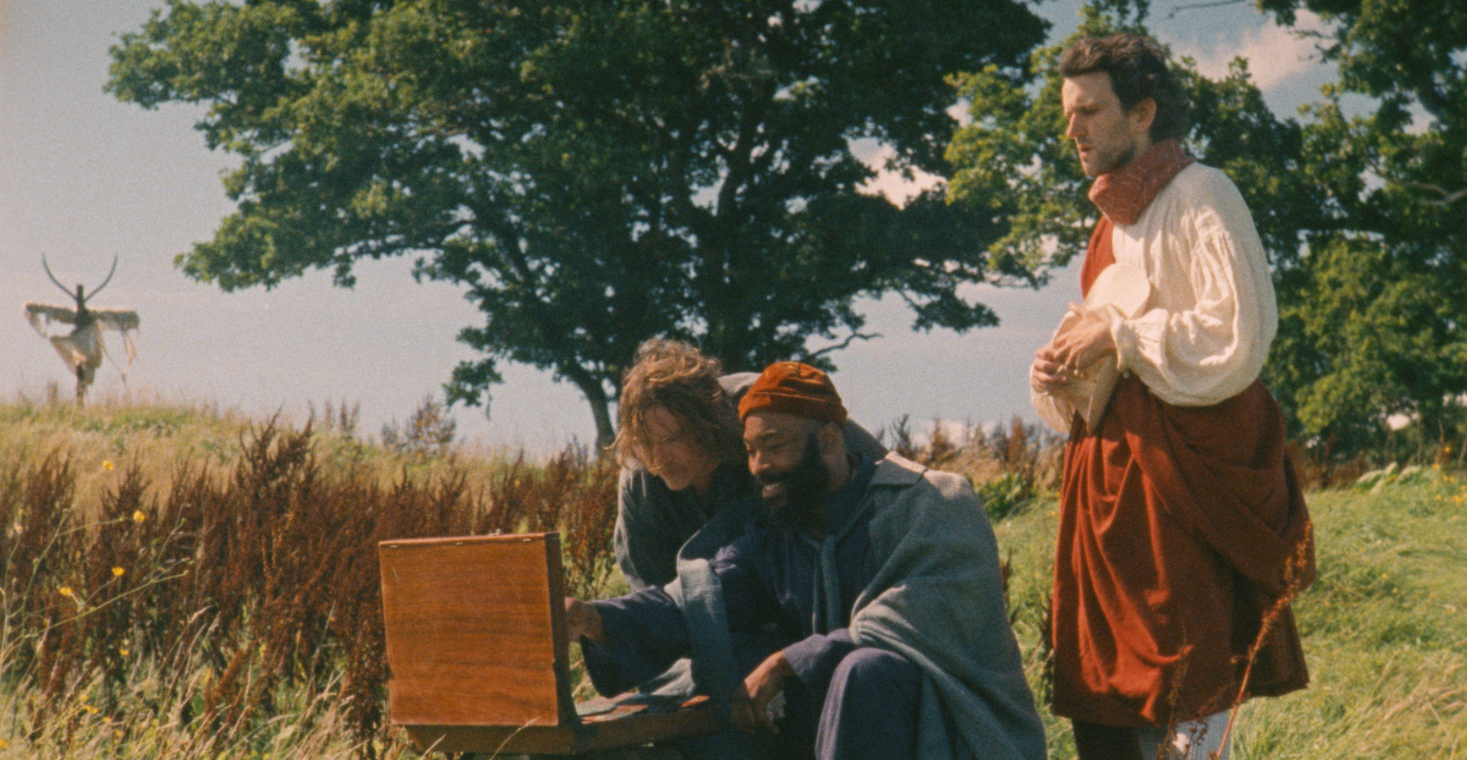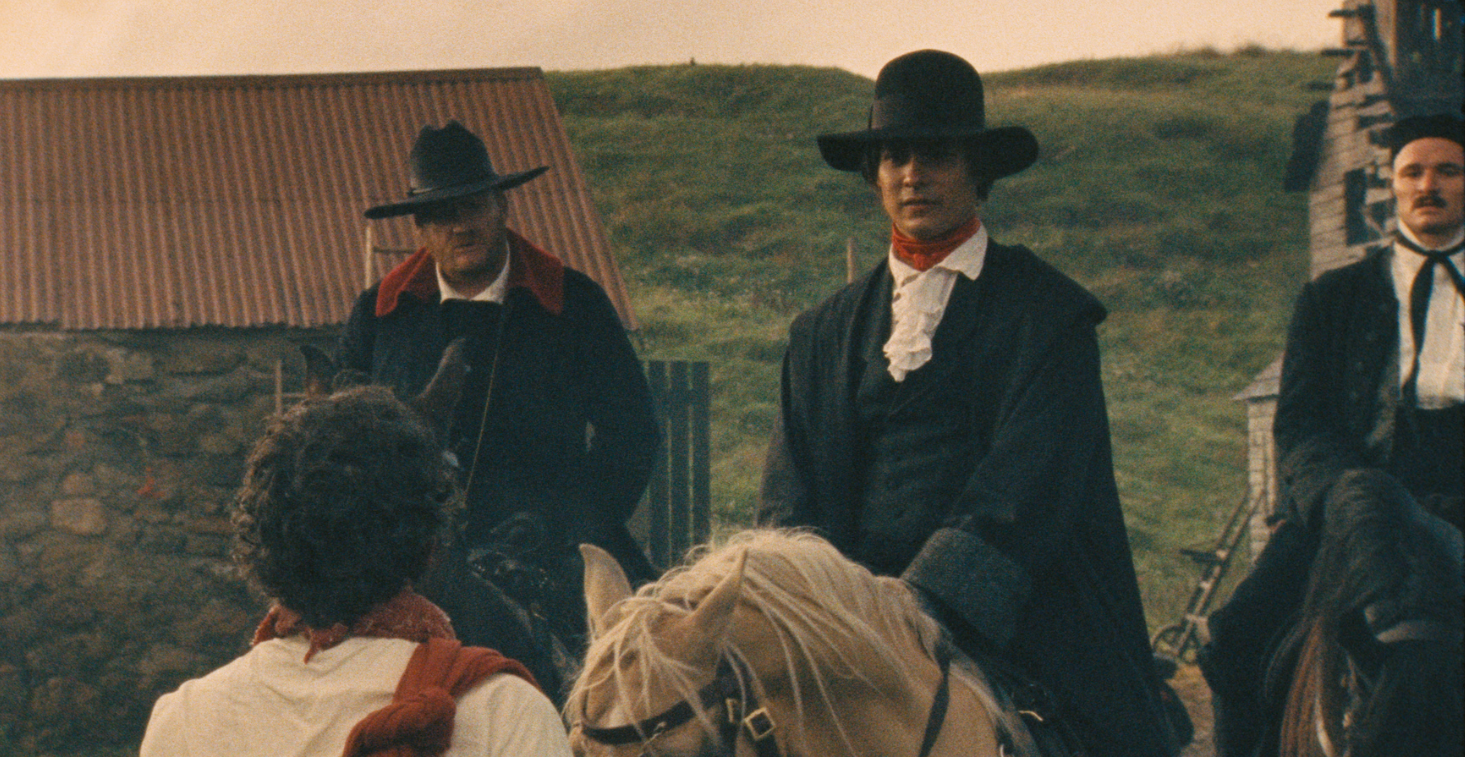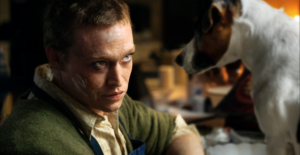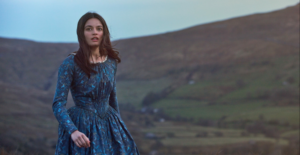Harvest
2024/2025

FR EN
L’expression française ‘on se fait une toile’ ne pourrait pas être plus appropriée tant ce film nous plonge dans un univers pictural digne du courant naturaliste. La photographie du chef opérateur Sean Price Williams (réalisateur de « The Sweet East ») joue des sources de lumières naturelles (bougies, torches, rayons de soleil) pour composer de magnifiques plans – y compris de nuit – semblables à des tableaux (à l’image du poster français à la Brueghel). Tourné en pellicule sur du Super 16 en plein décors sauvages du Glen Lonan, sur les berges du Loch Nell, « Harvest » s’impose comme un film sensoriel et tactile qui scintille de couleurs et nous plonge dans le vécu du lieu et de ses personnages.
Le film saisit au plus près la brutalité du monde paysan du XVI-XVIIe siècle pendant la moisson écossaise, et enregistre la lente agonie d’un village anonyme condamné par l’inexorable marche du progrès. C’est un scénario imprévisible raconté à travers le point de vue d’un marginal (Caleb Landry-Jones, fascinant), ni villageois ni seigneur qui fait office de narrateur impuissant, de témoin à la fois innocent et lâche. Sa position d’entre-deux se manifeste jusque dans la composition des plans, où il est systématiquement en bordure de groupe, voire seul à l’image des rituels auquel il procède dans son coin au début et à la fin du film. Master Kent (Harry Melling) règne avec bienveillance sur cette communauté recluse en osmose avec la nature dont la vie quotidienne et l’harmonie locale va se dégrader lorsque surgit un homme venu d’ailleurs (peau noire, longue barbe) qui inquiète. L’arrivée du Seigneur héritier voulant imposer une rentabilité foncière dans la seconde partie du film, marque un tournant pour les personnages comme pour les spectateurs à mesure que les teintes, jusque-là flamboyantes, se ternissent irrévocablement annonçant la mort imminente d’un monde comme menacé par l’ombre de l’enclosure.

A la dimension poétique du film, s’en ajoute alors une plus politique et historique sur l’évolution de la propriété et de l’exploitation de la force de travail. Décidée par une série de lois dans l’Angleterre des Tudors sous la pression de puissants propriétaires terriens, l’enclosure consiste à clore les champs à l’aide de murets (à l’image du dernier plan symbolique) ou de haies pour développer l’élevage exclusif des moutons. C’est un processus qui a entraîné la disparition des communs, ces terres collectives gérées par une communauté villageoise. Or, sans accès à ces communs, les paysans sont contraints de quitter leur campagne pour rejoindre la ville et former un nouveau réservoir de main d’œuvre bon marché. Karl Marx considère ainsi ce bouleversement géographique, économique et juridique comme un point de départ du capitalisme. Et toute la violence de ce processus historique se condense alors dans un outil loin d’être purement artistique, la carte, synonyme de bascule vers un contrôle du paysage et de ceux qui l’habitent. « Harvest » explore ainsi le poids et le sens des cartes dans ses contrastes géométriques entre une représentation du terrain qu’on y voit à une réduction des éléments humains et naturels pour y quadriller des proportions prédéfinies.
« Harvest » est ainsi un film sur l’une des formes de naissance du capitalisme dans son exploration de deux visions irréconciliables : l’une collective, l’autre individualiste. Le film construit alors sa critique à travers une jeu de regards – souvent filmé en très gros plans – tantôt accusateurs, tantôt tendres, coupables ou résignés, et la mise en scène du contraste entre deux espaces : le village (saturé de couleurs et de sons) et le manoir (froid et silencieux). La réalisatrice grecque Athiná-Rachél Tsangári signe une fresque originale hautement métaphorique – il aura ici fallu sept jours, non pas pour créer un monde, mais pour l’anéantir – et plein de dissonances – notamment dans la langue avec un phrasé particulier et quelques idiomes volontairement anachroniques. C’est un conte philosophique et à la fois historique et atemporel (en n’intégrant aucun élément de contexte) qui peint le tableau d’une communauté à travers son folklore, son quotidien, et son fonctionnement (où les femmes occupent une place fondamentale).
Raphaël Sallenave
The French expression ‘on se fait une toile’ (meaning both a movie and a painting) couldn’t be more appropriate, as this film submerges us in a pictorial universe reminiscent of the naturalist movement. The cinematography by Sean Price Williams (director of “The Sweet East”) uses natural light sources (candles, torches, sunlight) to capture magnificent, painting-like shots – even at night (just like the French poster a la Brueghel suggests). Shot on Super 16 film in the wilds of Glen Lonan, on the shores of Loch Nell, “Harvest” is a sensory, tactile film that sparkles with color and brings us right into the experience of the land and its characters.
The film captures the brutality of the 16th-17th century peasant world during the Scottish harvest, and records the slow agony of a nameless village doomed by the relentless march of progress. It’s an unpredictable scenario told through the point of view of an outsider (Caleb Landry-Jones, fascinating), neither villager nor lord, who acts as a powerless narrator, a witness both innocent and cowardly. His in-between position is even apparent in the composition of the shots, where he is systematically on the edge of the group, or even alone, as in the rituals he performs on his own at the beginning and end of the film. Master Kent (Harry Melling) benevolently reigns over this remote community in osmosis with nature, whose daily life and local harmony are about to erode when a man from elsewhere (dark skin, long beard) arrives and raises concern. In the second half of the film, the arrival of the heir lord, who wants to ensure the profitability of the land, marks a turning point for both characters and viewers, as the previously flamboyant hues irrevocably fade, heralding the imminent death of a world threatened by the shadow of enclosure.

The film’s poetic dimension is complemented by a more political and historical one on the evolution of property ownership and the exploitation of workforce. Enclosure, enacted by a series of laws in Tudor England under pressure from powerful landowners, saw fields enclosed by low walls (as seen in the final, symbolic shot) or hedges, in order to develop the exclusive breeding of sheep. It’s a process that has led to the disappearance of the common lands, those collective lands managed by a village community. Without access to these common lands, peasants were forced to leave the countryside for the city, where they formed a new supply of cheap labor. Karl Marx then saw this geographical, economic and legal upheaval as a starting point for capitalism. And all the violence of this historical process is brought together in a tool that is far from purely artistic: the map, synonymous with a shift towards control of the landscape and those who inhabit it. “Harvest” thus explores the weight and significance of maps in its geometric contrasts between a representation of the terrain as it is seen and a reduction of human and natural elements to grids of predefined ratios.
“Harvest” is therefore a film about one of the key roots of capitalism, in its exploration of two irreconcilable visions: one collective, the other individualistic. The film builds its argument through a set of glances – often shot in tight close-ups – that are sometimes blaming, sometimes tender, guilty or resigned, and the contrast between two spaces: the village (saturated with color and sound) and the manor house (cold and silent). Greek director Athiná-Rachél Tsangári has created a very original, highly metaphorical fable – here, it took seven days, not to create a world, but to wipe it out – and full of dissonances – including in the language, with its distinctive phrasing and deliberately anachronistic terms. This is a philosophical tale that is both historical and non-temporal (by not integrating any elements of context), painting a picture of a community through its folklore, its daily life, and the way it operates (in which women play a vital role).
Raphaël Sallenave

